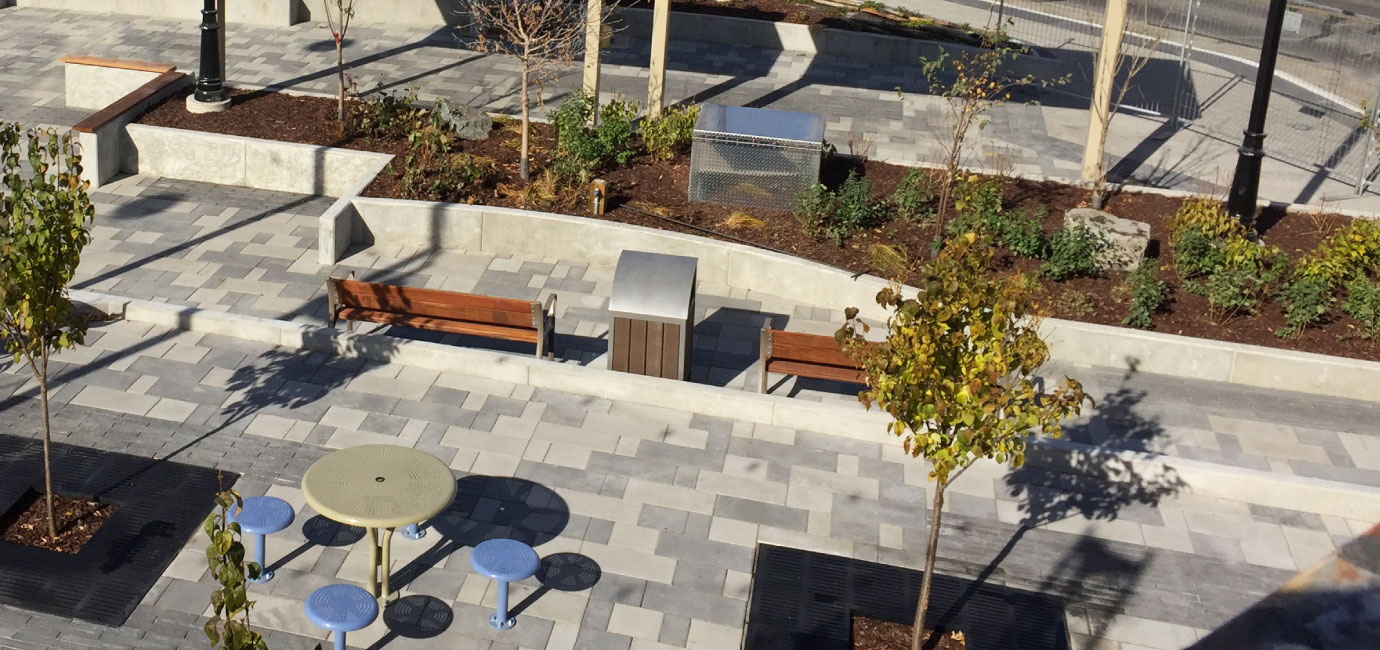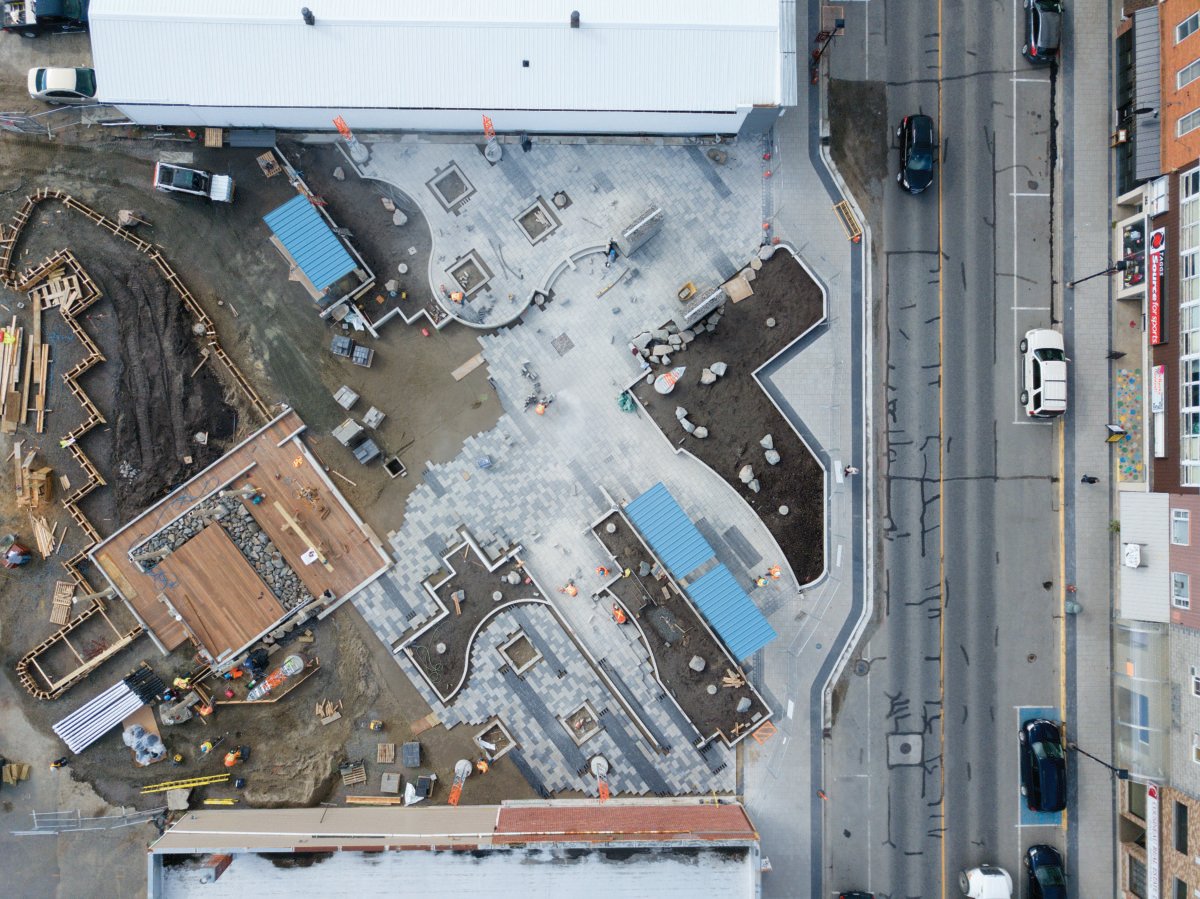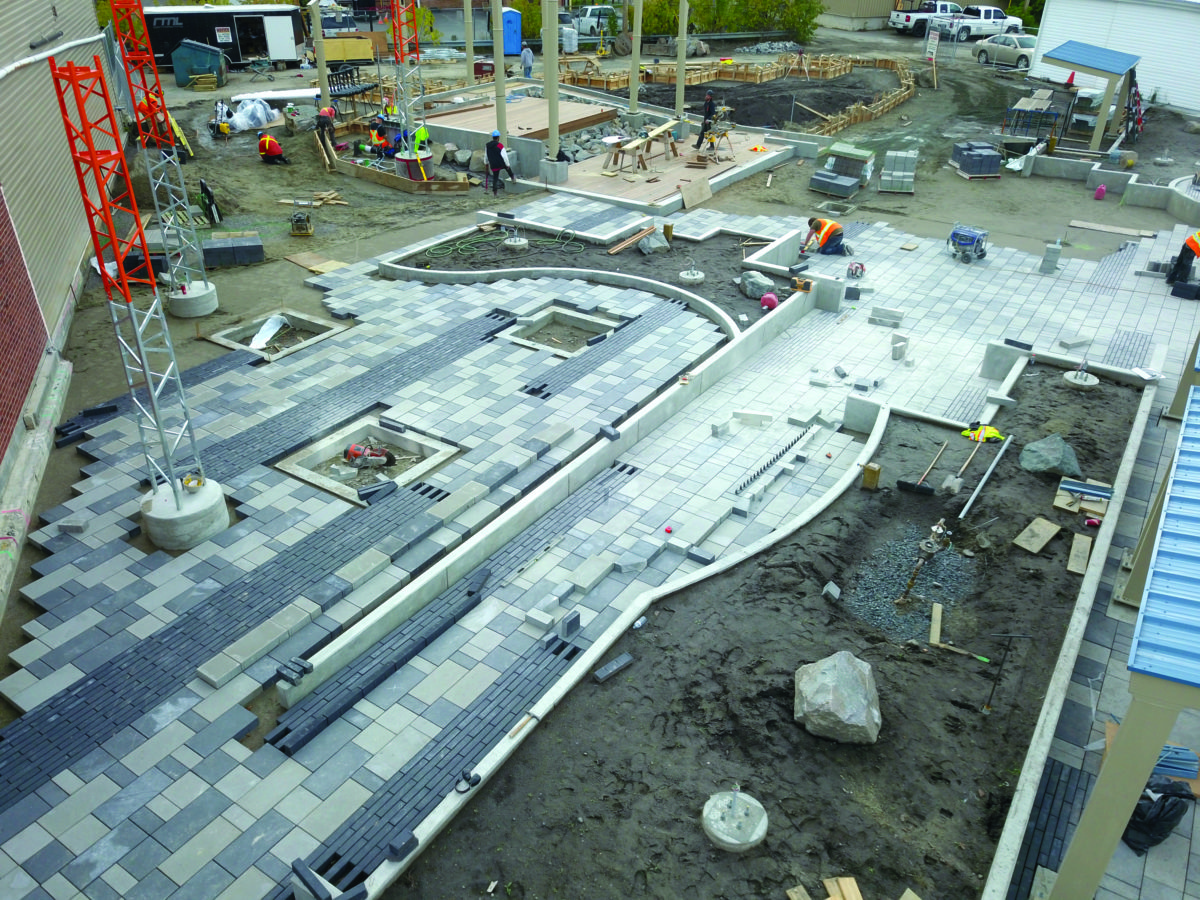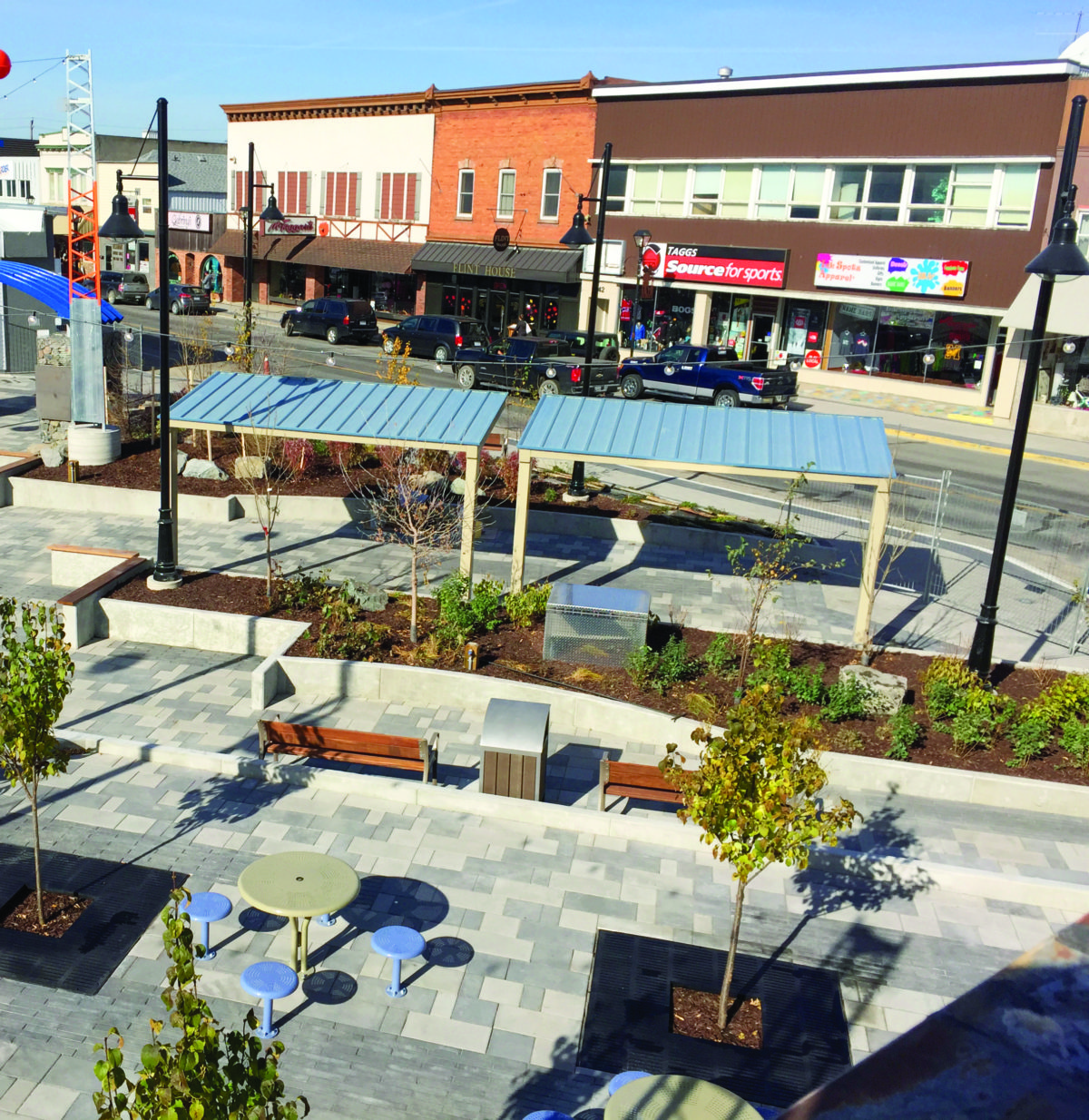Rainy Lake Square
 Back to Solutions
Back to Solutions
Project: Rainy Lake Square
Landscape Architect: Scatliff + Miller + Murray
Location: Rainy Lake Square, Fort Frances, ON
Product: Broadway Family - 150 x 300 x 100 mm,
300 x 300 x 100 mm, 300 x 600 x 100 mm,
451 x 76 x 100 mm
Colour: Natural, Dark Grey, Ebony
Project Owner: Town of Fort Frances
In early 2016, the Town of Fort Frances awarded Scatliff + Miller + Murray (SMM) with the Rainy Lake Square design, a 20 thousand square foot plaza in the heart of the community’s downtown core. It was constructed on the site left vacant by the recent demolition of the historic but long abandoned Rainy Lake Hotel, with the intention to again provide a place for civic energy to flow and the social life of Scott Street to flourish.
Design Inspiration
The design of the Rainy Lake Square was inspired by the unique natural setting commonly found in the rugged landscapes of Northwestern Ontario. The glaciers of the last age played a huge role is carving out the many lake basins and giving form to the land as they dragged their way across the landscape. Even today, that powerful force is still on display in the rocks and landforms that reflect the direction in which those ice sheets receded. In turn, the design of the Rainy Lake Square reinterprets those primal forces and their lasting effects on defining the region, its setting and its people.
Interlocking concrete pavers were selected as a surface partly for their practical aspects such as durability, versatility and ability to integrate into a wide variety of adjacent surfaces. But equally as important is their ability to introduce variations, patterns and in doing so, tell a story. At Rainy Lake Square, the paving pattern reinterprets the local geology and those formative glacial forces. The striated and rippling pattern of Broadway Pavers complete with inclusions strips of smaller format 318 Broadways reflect the appearance of those exposed rock outcrops that were ground down and left behind. It is a sight so familiar in the region that it speaks to the spirit of the place and to those that call the area, home.
Author: David Bodnarchuk of Scatliff + Miller + Murray













 Back to Solutions
Back to Solutions


